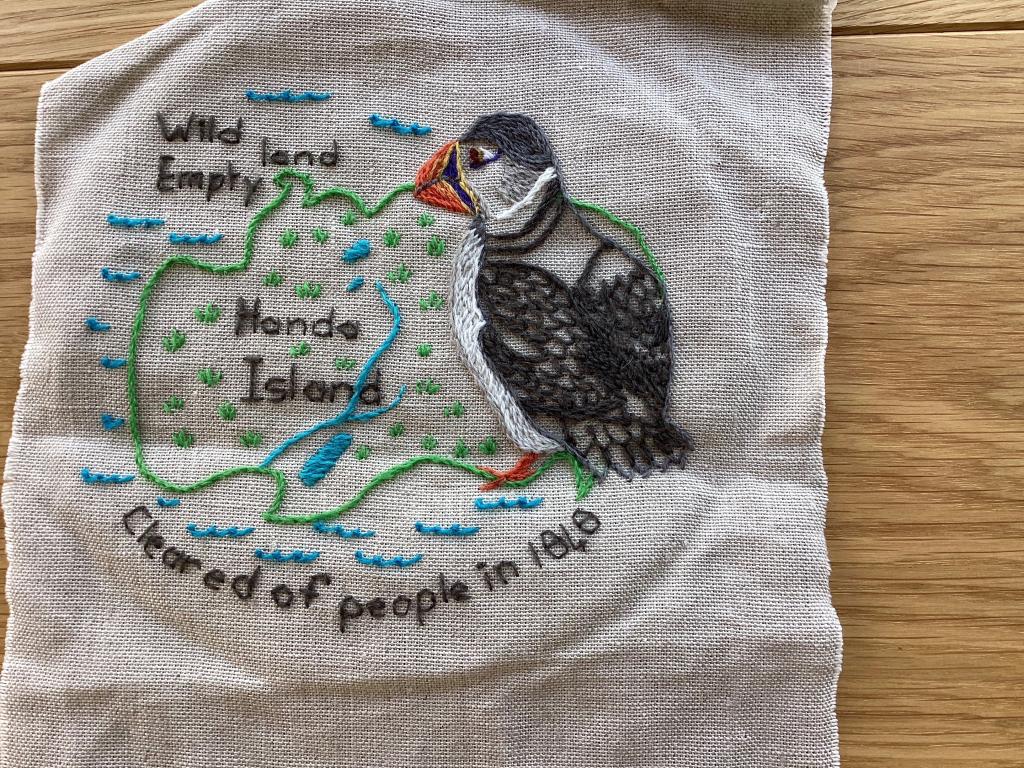
Handa - A Story of Loss
By Jean MacKay
 Journey Stone tribute to the story of Handa Island
Journey Stone tribute to the story of Handa IslandImage provided by Jean MacKay
Handa was populated up until early 1800s when it was cleared by the landlord, Lord Reay. It then became part of the Badnabay sheep farm.
Following bankruptcy of the sheep farmer, the landlord considered the most profitable use of the island was to divide it into crofts. There was some kind of competition held and the island was resettled in 1828. The following year the island was sold to Marquis of Stafford who later became the Duke of Sutherland. These new islanders left in 1847/8, many going to Pictou and onwards to Prince Edward Island.
History records they asked to go because of the potato famine, but it is doubtful they went voluntarily as they had a varied diet including oats, fish and seabirds as well as potatoes. The island became incorporated into the factor, Evander McIver's, sheep farm. The emigrants left from Loch Laxford on the barque Ellen. When they arrived in Pictou they were required to pay a headage payment, and those that went on to PEI were required to pay another headage payment which they could ill afford. One of their number went back to Pictou and eventually managed to get this waived.
Pre-recorded history, Handa was used as a burial place for people from the mainland because the wolves would dig up graves on the mainland. The islanders had a parliament and the eldest woman on the island was known as the Queen.
North West Sutherland is the sparsest populated area in Europe, with 1 person per square kilometre. The area is suffering from depopulation, falling school rolls and an ageing population. On Handa birds have replace humans completely, hence the significance of the large puffin which dominates Handa on my journey stone.
Many thanks to Jean MacKay, of the Group 31 Top Left Corner Stitchers, for sharing with us the story behind her journey stone, created as part of the Tapestry of the Highlands and Islands.
WHAT IS A JOURNEY STONE?
Prior to the beginning of the stitching of each tapestry panel, each stitcher of the Tapestry of the Highlands and Islands was tasked with telling their interpretation of the 'Spirit of the Highlands and Islands' within a blank outline of a stone. The possibilities were truly endless - is it represented in the land? The people? A historical site? A favourite memory?
In any case, each journey stone represents the connection between each individual stitcher, their story, and their own sense, or 'spirit', of place. Discover more of the stories behind the journey stones of the Tapestry of the Highlands and Islands here.